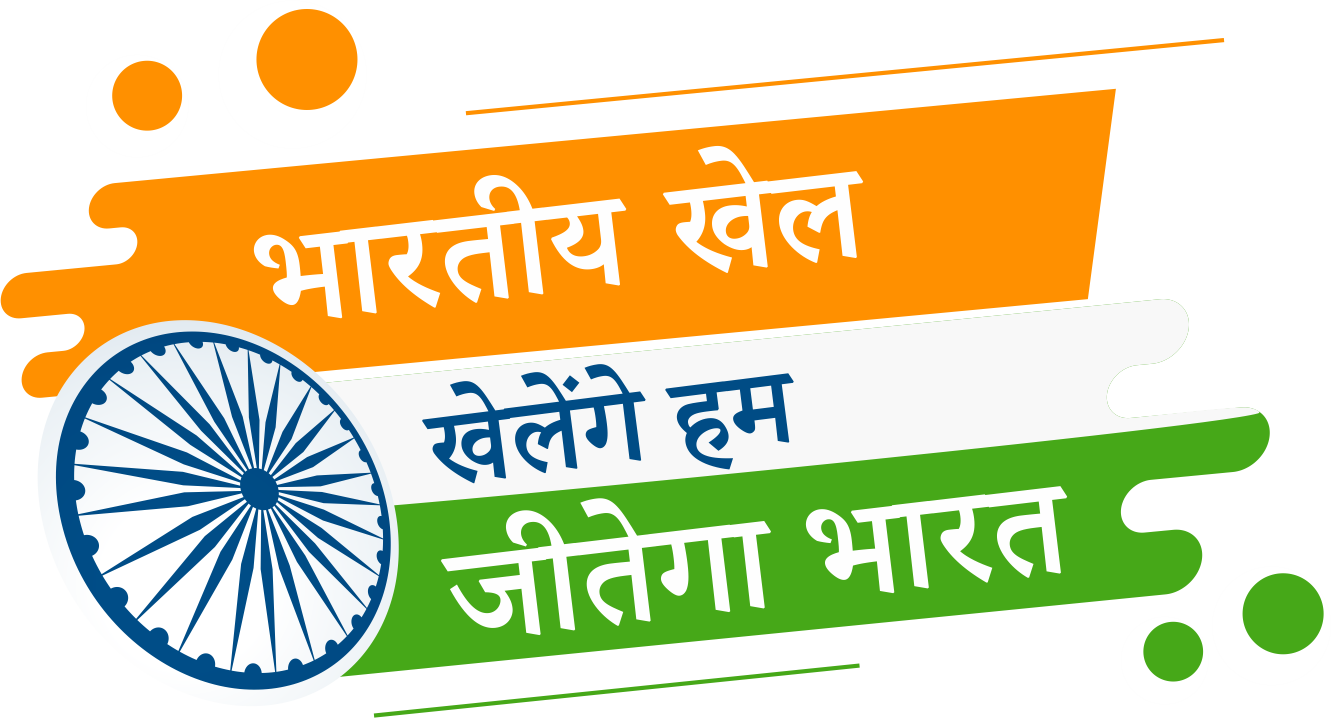Kho-Kho
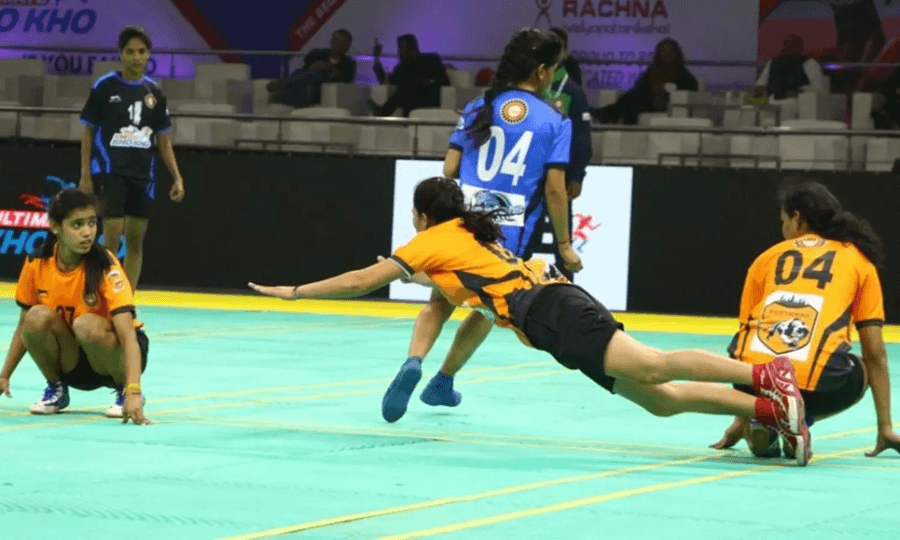
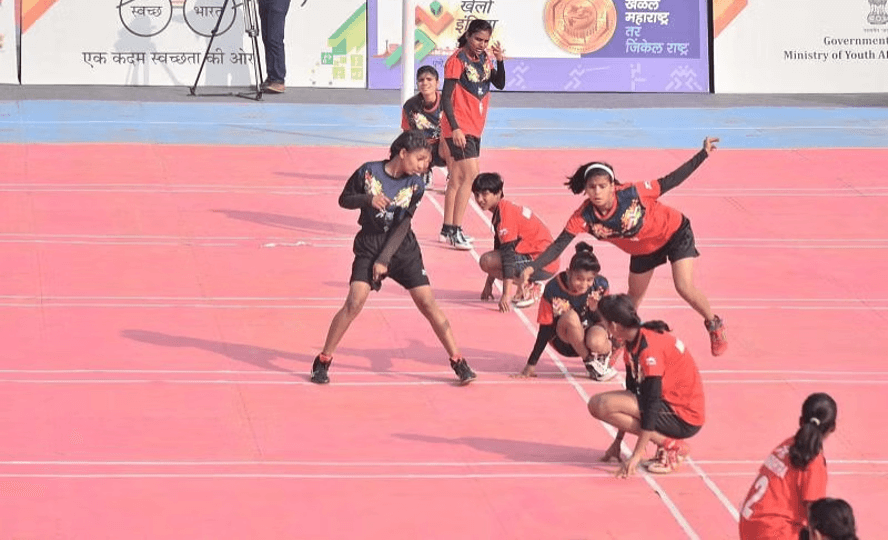
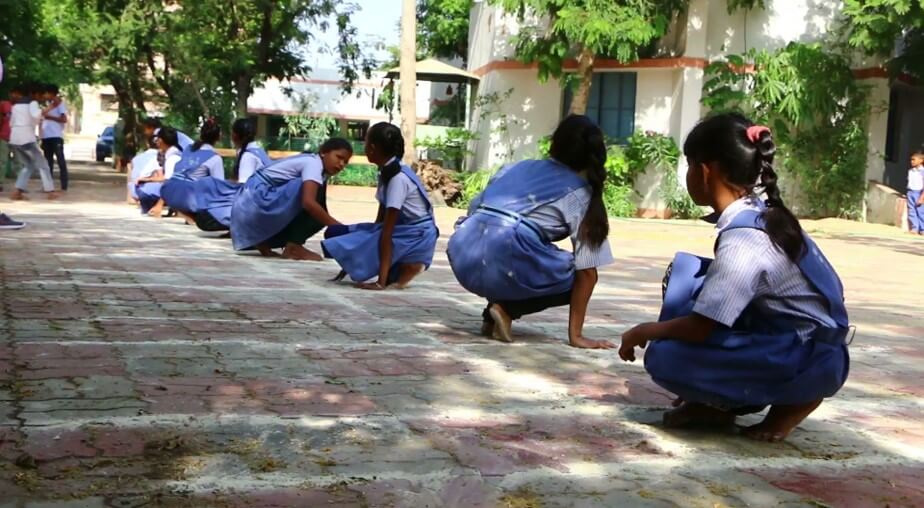
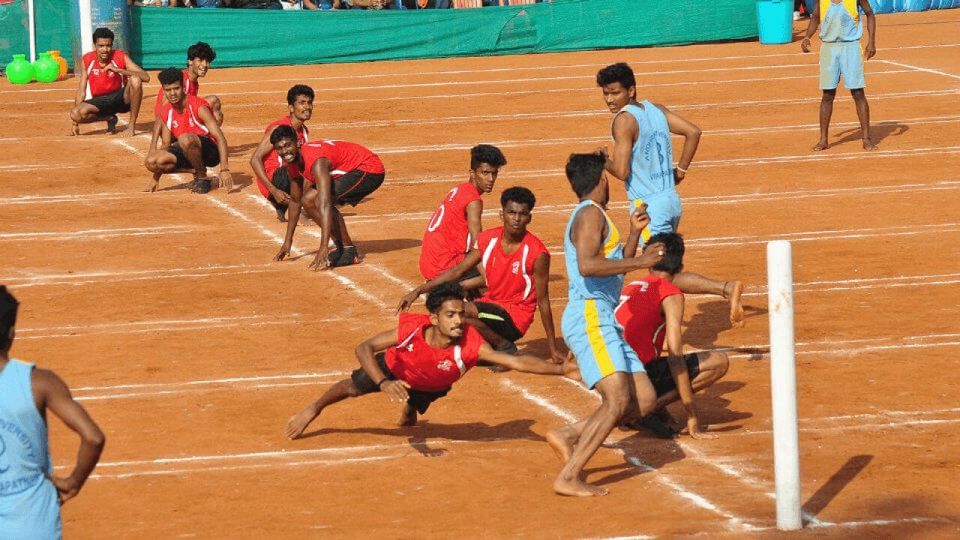
Kho Kho
1st Jan to 31st May, 2024
Kho-kho is a popular form of the Run-Chase sport from ancient India, often a major part of the games period in schools. The game involves chasing and touching runners while running in a linear path around two poles with techniques of forming a relay of chasers while passing on the chasing turn.
Orientation
How to play
There are two types of kho-kho.
- Standing kho-kho: One player is selected as a chaser, the other players—the runners— will be standing in pairs, one behind the other, forming a circle. The runners can run in and around the circle within a marked boundary. The runners pass on the running turn by stopping and standing in front of any pair of their choice and instantly the player who is standing behind in the pair becomes the new runner. This type of kho-kho is a relay of runners.
- Sitting kho-kho: This type is played by forming a relay of chasers to catch the runners. This is the format described here.
Kho-kho origin
Kho-kho is an ancient Indian game, possibly derived from the different strategies and tactics of the war in Kurukshetra as described in the Mahabharata. The chariot fight during the war and the zigzag pathways followed by the retreating soldiers show similarity with kho-kho.
On the 13th day of the war, the chief of the Kaurava army, Guru Dronacharya, drew a typical strategic circular formation—the chakravyuh. A deadly almost impenetrable war formation. The warrior Abhimanyu was killed in this Chakravyuh having to fight with 7 warriors alone, but he managed to to inflict heavy casualties over Kaurava. The tactics used by Abhimanyu to fight the defensive circle is similar to the game play of Kho-kho.
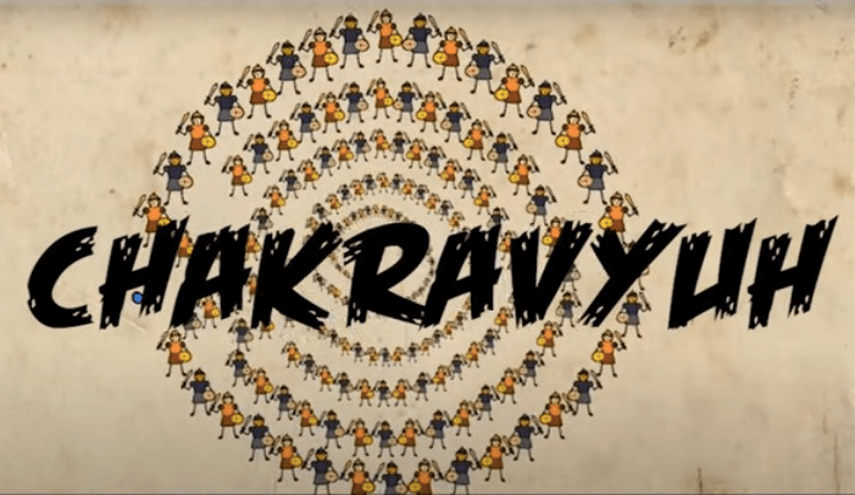
The play
The goal of the game is to chase and catch.
Kho is a voice signal sent to communicate to other players to indicate their turn to chase.
The ultimate objective of the game is strategically building a chain to catch the runner. The runners run zigzag, crossing between the sitting players, and change directions rapidly to make it tough to be tagged themselves.
Download the Kho Kho rule book for tournaments
Training Material
Kho-kho is a popular form of the Run-Chase sport from ancient India, often a major part of the games period in schools. The game involves chasing and touching runners while running in a linear path around two poles with techniques of forming a relay of chasers while passing on the chasing turn.
There are two types of kho-kho.
1.Standing kho-kho: One player is selected as a chaser, the other players—the runners— will be standing in pairs, one behind the other, forming a circle. The runners can run in and around the circle within a marked boundary. The runners pass on the running turn by stopping and standing in front of any pair of their choice and instantly the player who is standing behind in the pair becomes the new runner. This type of kho-kho is a relay of runners.
2.Sitting kho-kho: This type is played by forming a relay of chasers to catch the runners. This is the format described here.
Other Names of the Game
Region | Names |
Ancient India | Kho-dhvanī krīḍā |
Bangladesh | Chhoyan-chhoyin |
Maharashtra | Rathedā |
England/Europe | Game of chase |
The play
The goal of the game is to chase and catch.
Kho is a voice signal sent to communicate to other players to indicate their turn to chase.
The ultimate objective of the game is strategically building a chain to catch the runner. The runners run zigzag, crossing between the sitting players, and change directions rapidly to make it tough to be tagged themselves.

Number of Players
1.Each kho-kho team consists of:
-12 players, but during a match
-only 9 players and a captain from each team can enter the field.
1.In casual games, each team’s captain is on the field but doesn’t play.
He or she keeps score and checks the fouls.
1.For official matches, the team also has two umpires, one timekeeper, one referee and one scorekeeper.
Equipment Needed
1)two poles
2)two watches
3)one whistle
4)one measuring tape
5)lime powder
6)score sheets for noting results.
The Playground
1.The game is played on:
– an evenly surfaced rectangular field outdoors/indoors
-measuring 29 m in length and 16 m in width.
1.At each end of the longer side of the field, there is a free zone rectangle measuring 16 m in length and 1.50 m in width.
The Playground for Kho Kho
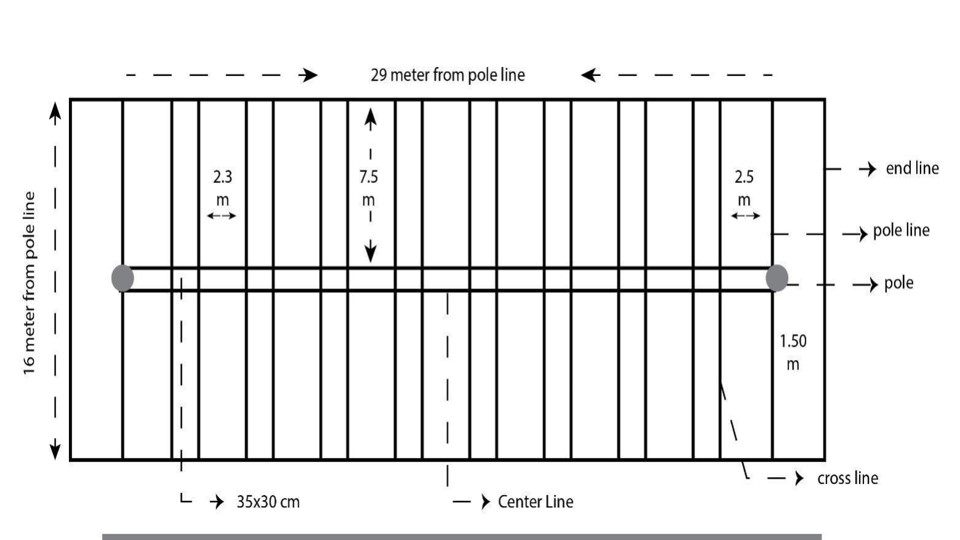
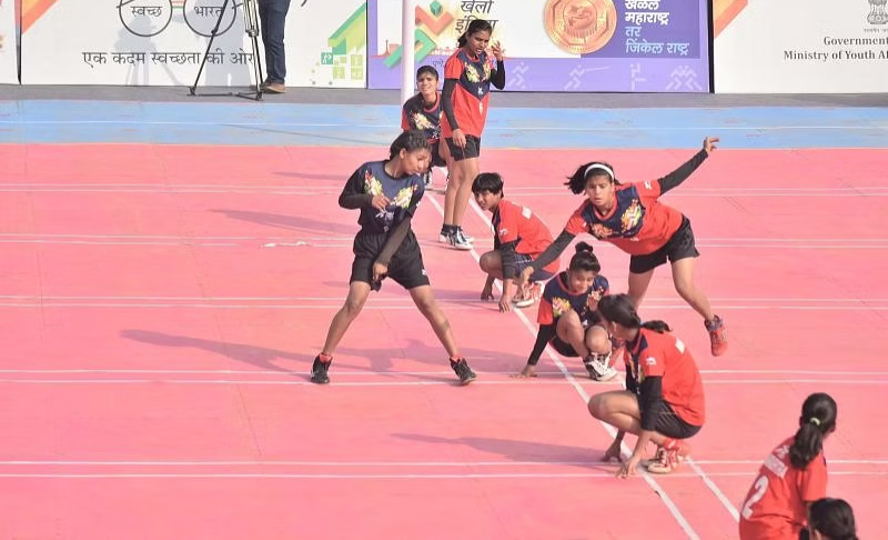
The play – action steps – 1
1.Two teams face each other in this game: runners and chasers. The game starts with a toss between the two team captains. The winning captain decides who will chase first.
2.9 players from the chaser team enter the field. From them, 8 players will sit/kneel in a row, alternating in the direction they face (adjacent members facing opposite directions) in eight boxes drawn in the central lane of the field.
3.The ninth member is the active chaser, who stands at either side of the poles, ready to start the play. The chaser in action tags out a runner by touching that player with the palm. Chasers move in the direction of the cross line to catch runners.
4.From the runner’s team, a batch of 3 players enters the kho kho ground at a time. After the third runner leaves the field, the next 3 must immediately enter the field.

The play – action steps – 2
1.The runners put in all their efforts to play out the 9 minutes, avoiding being touched by the chasers while not crossing the field boundaries.
2.The chaser on the move gives kho (a tap on the back and shout of ‘kho’) as an indication to take over the chasing turn to any teammate sitting crouched in one of the boxes in the central lane. Rapidly, that teammate gets up and rushes to catch the runners.
3.Hence, the chase or pursuit forms a series of khos, and the play continues as a relay of chasers.
4.The position of the sitting players is dynamic; one will never find the same sequence of players sitting in the same order as when the game had started.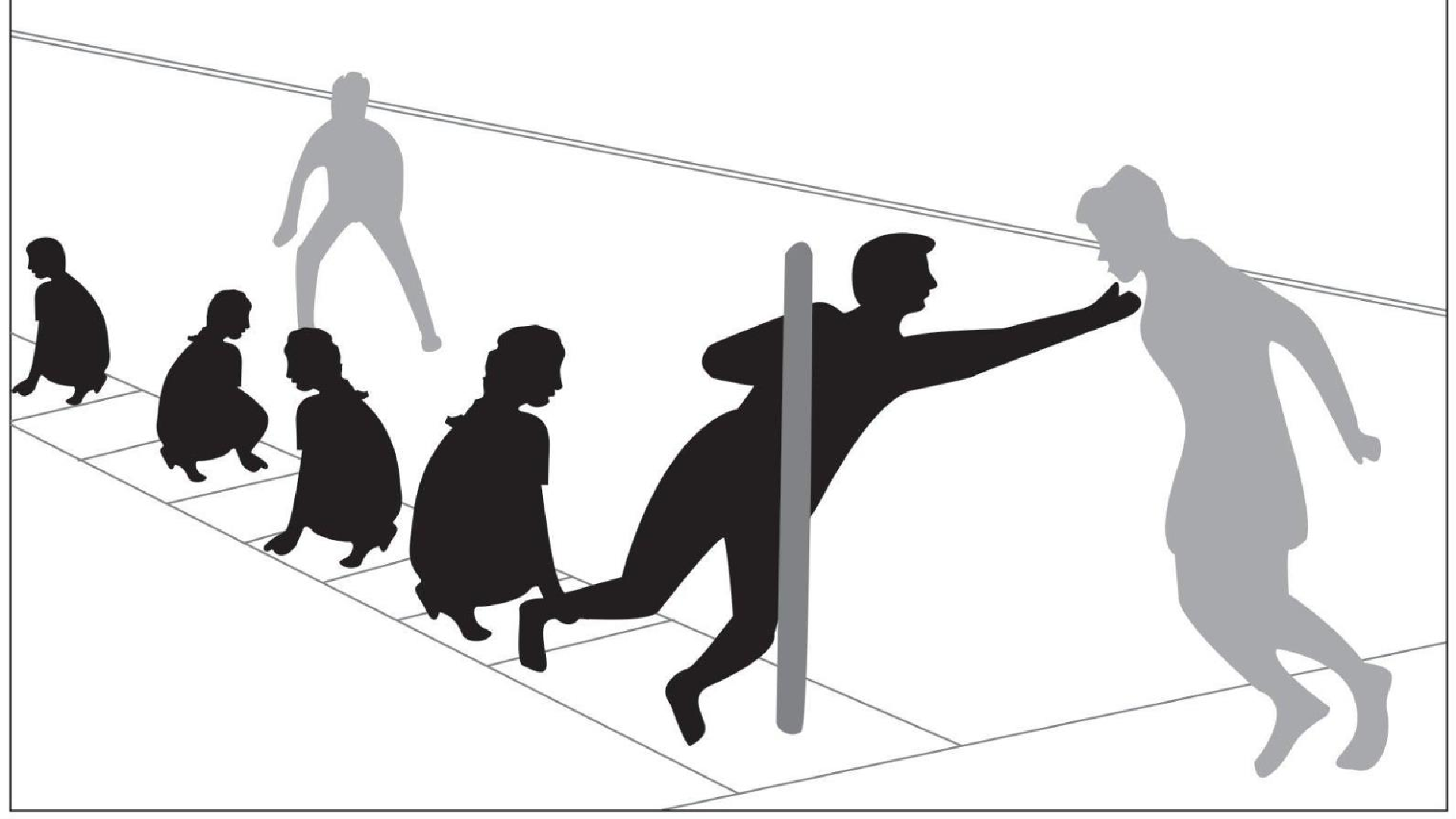
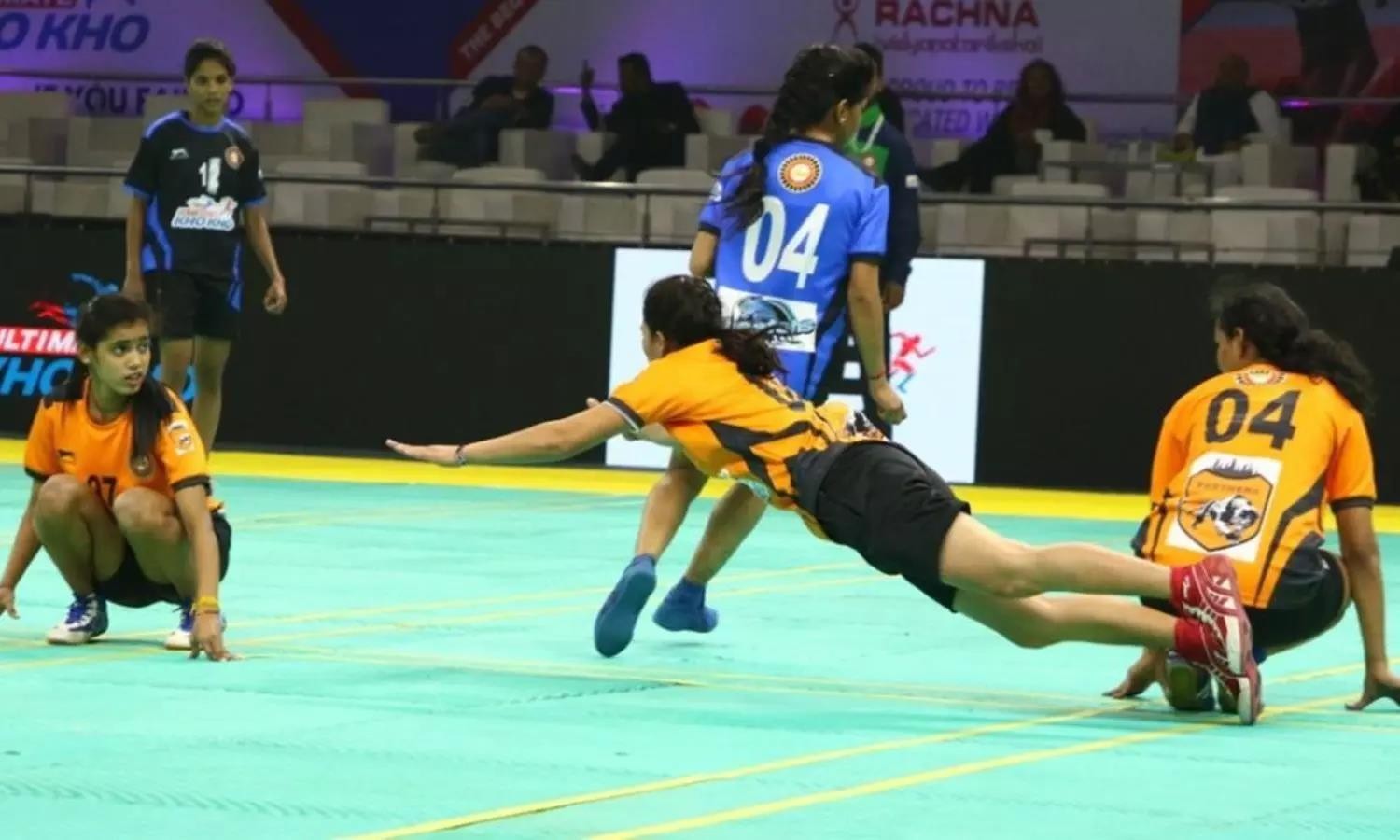
Scoring
- Whenever any chaser catches any of the three runners, the chaser’s team
gets one point.
- If the chaser team’s score is nine points more than the runners in the first innings, then the chasers can choose to take the role of runners without waiting for the next innings.
- The team that scores maximum points at the end of the game will be declared the winner.
- If the match ends with a tie, a tiebreaker is The team that scores first is declared the winner of the match.
Rules for Chasers
- Chasers can run only in the direction which they face, and they cannot turn They can take a U-turn only after reaching the pole. However, according to new rules, chasers are allowed to move in the direction of their shoulder line(sideways) too.
- The chasers are not allowed to cross the central lane drawn between the two That is, they cannot pass between the sitting teammates.
- While giving kho to another chaser, the tap on the back and uttering kho loudly should be simultaneous. Any gap is considered a foul.
- The runner will not be declared out if the sitting chaser touches him or her from the block without receiving a kho (that will be the foul of early get-up).
- The chasers can change the running direction only after going in the free zone, beyond the poles.
- After touching a runner, even if the chaser changes the direction (except in the free
zone) before giving a kho, the runner will be considered not out.
Rules for Runners
- Runners can move anywhere in the They can cross the central lines without restrictions and can go between two players. They are not allowed to go outside the boundary.
- Each team consists of twelve players, but only nine players play in a batch of three in one innings.
- After the third and last runner of the batch is out, the next batch must enter the
playfield before a kho is given by the active chaser.
Runners are declared out if
- they are touched by the active chaser,
- they drift out of the playfield, or
- they enter the playfield
Skills required
- Apart from the basic skills of running and chasing, players need motor skills such as endurance, speed, agility and flexibility. They need to be responsive, cooperative and attentive to the actions of their teammates.
- Some exclusive skills required include diving and dodging – both requiring agility and strength.
- Kho-kho is often misconstrued as a game for children. It happens to be a universal sport enjoyed by people of all Any player who can focus and run swiftly can play the game well.
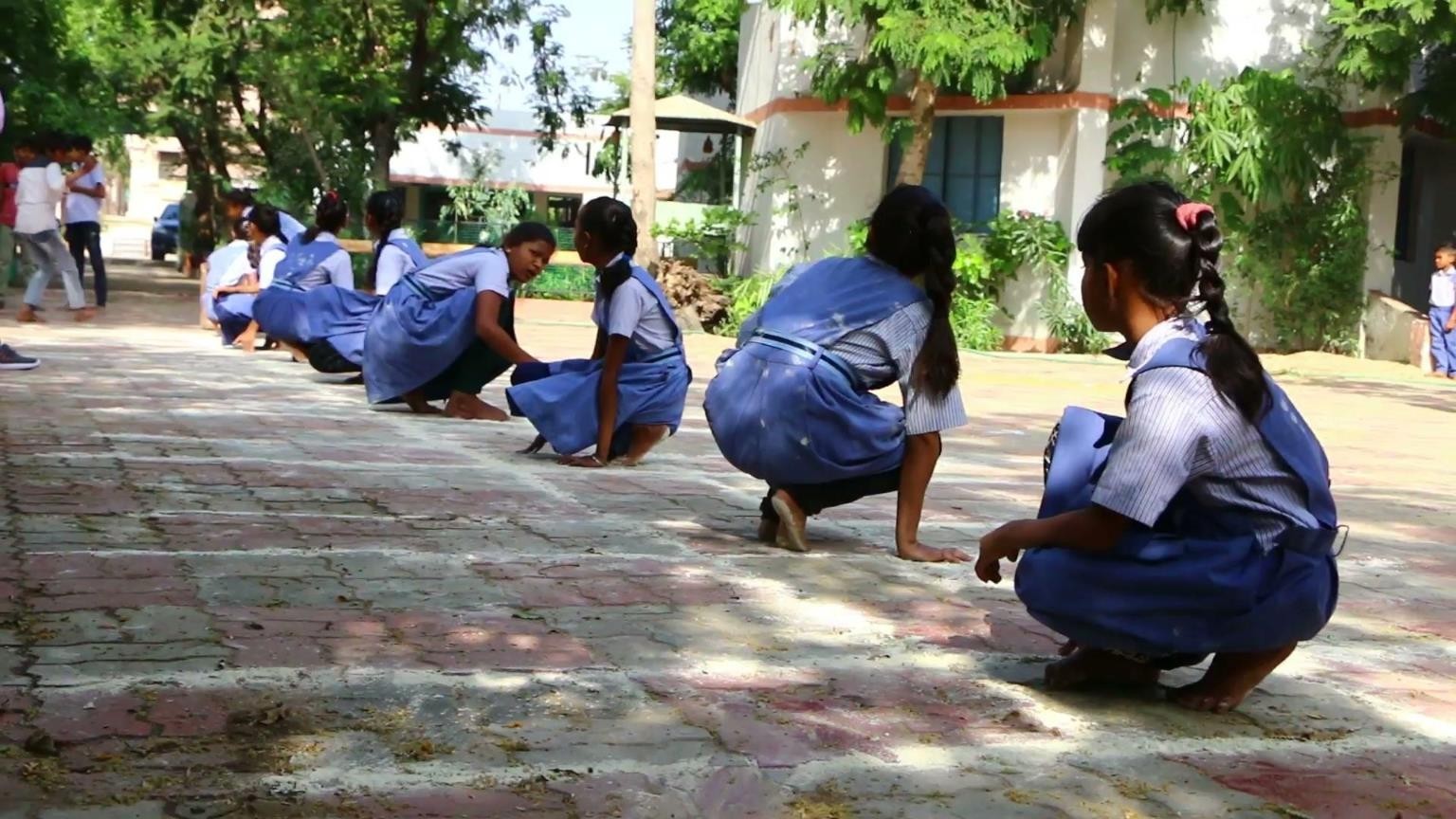
Address
Bharatiya Khel
Indian Knowledge Systems (IKS) Division
Ministry of Education (MoE),
Government of India,
Our office is located in
All India Council for Technical Education (AICTE)
Nelson Mandela Marg,
Vasant Kunj,
New Delhi-110070

